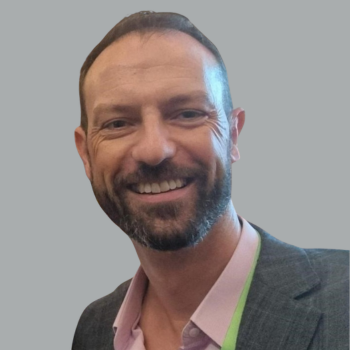Visionary Voices
Workforce
Transformation



AI Is a Journey, Not a Destination: Navigating Workforce Transformation in the Age of Automation
CHROs Are at the Center of a Workforce Revolution
The CHRO role is undergoing one of the most profound evolutions in decades. As employee expectations begin to mirror the seamless, AI-powered experiences they get from Apple or Amazon, HR leaders are being challenged to deliver more—with less.
Routine HR interactions—from onboarding to benefits inquiries—are now ripe for automation. But the opportunity isn’t just operational—it’s strategic.
“How are we preparing employees for a world where their first point of contact is an AI chatbot—not a human?” Rory asks.
Strategic CHROs are asking bigger questions:
- How do we reskill and reframe work?
- How do we ensure clean, accessible data to support AI accuracy?
- What governance frameworks are required to manage AI in HR?
He draws a compelling parallel to the iPhone’s impact on the workplace. Once consumer tech leapfrogged corporate systems, employees started asking: Why do I have better tools at home than I do at work?
“Whether you’re at home or at work, you’re still a person. People now expect simple, instant answers—not SharePoint folders with 20,000 PDFs.”
The shift to agentic AI—intelligent systems that act independently—is widening the competitive gap. Organizations still relying on hallway conversations, spreadsheets, and sticky notes will be left behind by those embracing automated, scalable workflows.
The Fourth Business Imperative: Optionality in an Uncertain World
Boards have long focused on three imperatives: revenue growth, cost containment, and risk reduction. Rory argues for a fourth: optional execution paths.
“In a world of geopolitical uncertainty, supply chain disruption, and constant market volatility, the real edge is having multiple ways to run your business if Plan A falters.”
This level of agility demands real-time data, strong governance, and the ability to assess whether alternate strategies can be operationalized quickly.
ServiceNow as the Experience Layer for AI and Automation
Most organizations are still wrestling with fragmented data—finance in one place, HR in another, risk somewhere else. But business workflows don’t operate in silos.
“ServiceNow becomes the experience layer that ties it all together,” Rory explains. “It lets you orchestrate automation and AI on top of your business processes—no matter where the data lives.”
Take something as simple as a laptop: onboarding, cybersecurity, finance, and risk teams all touch it. ServiceNow unites these perspectives, enabling a consistent, automated experience without needing to rebuild your entire IT infrastructure.
RGP’s Edge: Deep Technical Skill + Human-Centered Design
Not only do we bring great technology depth, RGP also brings the people and process depth. Together, we can engage across the enterprise—from the boardroom to the service desk.
This holistic approach empowers clients to connect enterprise automation strategy with the human experience—from CFOs and supply chain leaders to CHROs and heads of customer service.
In fact, Rory’s team recently won ServiceNow’s global AI demo championship for the APAC region at Knowledge 25 in Las Vegas—recognition for their practical, scalable AI automation framework.
The Opportunity Is Exponential
The pace of change is accelerating beyond traditional planning horizons.
“Ten years ago, a five-year plan was a stable roadmap. Today? You could 10X or 100X that pace—and not feel ridiculous saying so.”
The organizations that embrace this acceleration—and bring their people along for the ride—will outperform those who cling to old models. The key is staying focused on your vision while remaining flexible enough to seize emerging opportunities.
What’s Next: Three Forces Shaping the Future of Work and AI
1
Agentic AI Integration: AI will increasingly perform entire workflows autonomously, requiring new controls, ethical frameworks, and employee experience design.
2
Cross-Functional Workflow Optimization: Automation will span beyond individual functions, requiring platforms that integrate siloed data and processes into unified, intelligent experiences.
3
Human-AI Collaboration Models: Success depends on building thoughtful systems for AI-human handoffs, reskilling programs, and ensuring AI augments human judgment—not replaces it.
The Bottom Line
The automation revolution is redefining what’s possible—and what’s expected. It’s not just about doing more with less. It’s about expanding optionality, enhancing decision-making, and reimagining how work gets done.
If you’re ready to build organizational agility through automation and AI—let’s talk.




